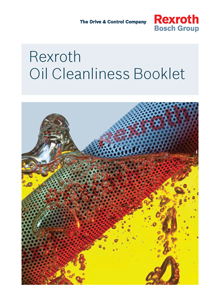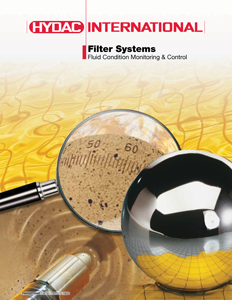Starting up hydraulic machinery after a shutdown? In 13 quick steps, learn how to avoid machine failure by watching “Hydraulic Cold Start-up Procedures Explained” or reading the steps below.
Due to unexpected extended shutdowns, machines not used over long periods are likely to have contamination that settles. When contamination sets in, it could lock-up valves causing additional downtime and costly repairs.
Watch the replay or read below and set yourself up for a successful hydraulic cold systems start-up.
Topics Covered:
– Hydraulic oil reservoir check
– Hydraulic filter elements and reservoir breather(s) replacement
– Accumulator nitrogen gas pre-charge pressure check
– Proper pump startup
– Ball valve(s) on suction lines verification
– Power unit(s) unloaded (low pressure) start-up
– Hydraulic valves functionality
– Electrical sensing device inspection
– Hydraulic leak systems check
– ISO cleanliness levels
– Hydraulic power unit reservoir temperature check
– Q&A
Meet Our Presenters
Brian Hrischuk
Brian Hrischuk is passionate about upgrading hydraulic technology for better performance. He is a Product Manager at Morrell Group where he applies his 19 years of experience in Industrial Hydraulics to engineer optimized solutions for customers.
Richard Dunnigan
Richard Dunnigan has been troubleshooting machines alongside customers for 36 years. As Product Manager at Morrell Group, he helps customers save time and money by utilizing his engineering know-how and experience in Industrial Hydraulics.
Step 1 – Check the Oil Level
- Do not assume that power unit reservoirs are at a safe oil level when you are starting up the system.
- If the oil level is low, fill it with filtered oil.
- There is typically a visual sight gauge on the power units where you can see what the current level of oil is inside the reservoir. The full level line at the top of the sight gauge shows the maximum fill point. Do not fill the reservoir above this line and do not fill the reservoir with unfiltered oil directly from a 55-gallon drum or tote.
- Recheck the oil after the initial startup. First, shut the system off, and then allow all the oil to drain back to the reservoir, and if accumulators reside in your system, allow them to discharge back to the reservoir and then recheck the oil.
Step 2 – Replace Filter Elements
- Replace all hydraulic filter elements in the reservoir. This includes return filter and pressure filters. If applicable, change filters in the recirculating kidney loop.
- Some systems include suction filters inside the reservoir. These filters are generally frowned upon in the industry because they are not a visible component and are generally overlooked during maintenance. Suction filters often become dirty and starve the pump of oil, which results in a catastrophic failure.
- Change any breathers on the power unit as frequently as you replace cartridge filters for pressure, return and suction.
Step 3 – Check Nitrogen Gas Pre-Charge pressure
- Pertaining to systems with accumulators
- Please refer to the schematic provided with the hydraulic power unit. This schematic should show a tag with the nitrogen gas pre-charge levels next to the accumulator.
- Nitrogen gas is to be set at 80% of the minimum system design pressure. The minimum system design pressure is not the system operating pressure. It is 80% of the pressure that was determined to be able to provide the forces required to do the work.
- Turn the hydraulic power unit off and deplete the accumulator of hydraulic pressure before checking the nitrogen gas pre-charge pressure. Ensure the pressure gauge in the pressure line of the system reads zero when charging the accumulators.
- If the system includes an accumulator with a safety dump block mounted underneath, that dump block includes a manually operated shut-off valve that isolates the accumulator from the tank. It is there to allow the accumulator to fully discharge oil to the tank if the accumulator needs serviced.
Step 4 – Fill Pumps with Oil
- Fill fixed displacement gear pumps with filtered oil through the pressure port and fill variable volume pumps through the highest case drain leakage port. This statement applies to lift-style power unit designs. In hydraulic power units where the pump is elevated above the reservoir level, the pump case could have completely drained itself into the reservoir during the shutdown period.
- If you start up a pump with an empty case, it can starve the pump of oil. A lack of lubrication would result in metal-to-metal contact of moving parts and of the internal parts would get very hot and wear very quickly.
- Fill the axial piston pumps with oil through the leakage port.
- It is not necessary to disconnect all leakage lines from every pump on the system. Instead, our recommendation is to start backing off the leakage line until you have a couple threads. The pump is probably full if you see oil starting to push out between the threads and escape from the pump. Tighten that fitting back into the pump. If you do not see any oil escape, completely remove the line and check to see if the oil level is low inside the pump. If it is low, refill the pump.
- It is just as important to prefill external gear pumps, which are filled through the pressure port.
Step 5 – Verify Ball and Suction Valves are Open
- This pertains to flooded systems. If the suction ball valves do not have limit switches to monitor whether ball valves are open and the hydraulic power unit starts, it is likely that the pumps will be starved of oil, resulting in a catastrophic failure
- The ball valve is open if the handle is in-line with the fluid connections. It is closed if it the handle is perpendicular to the fluid connections.
- Inspect every machine and ensure all ball valves are open to avoid catastrophic pump failures.
Step 6 – Start-Up Power Units Unloaded
- Start power units at low pressure, but not below the minimum rated operating pressure of the pump. Refer to the manufacturer’s technical data sheet to determine the minimum operating pressure for the pump.
- To help prime pumps, it is best to start them at low pressure and let them run at low pressure for a few minutes. This will ensure all air evacuates the pump.
- The inboard adjustment is the larger of the two adjustments and is the only one that should be moved to adjust the pressure of the pump. Facing the screw – to decrease pump pressure, turn counterclockwise, to increase pressure turn clockwise.
Step 7 – Verify Hydraulic Valves are Functional
- If a directional valve is not shifting after proper voltage is applied to the solenoid, either the solenoid failed or the valve spool is silted up.
- Try shifting the valve by using the manual overrides that are in the end of the solenoid. Take an allen wrench and depress it to see if the valve is sticking or not. If you have two solenoids, check both for sticking.
- If the valve is shifting easily when you depress the manual override pin with an allen wrench, it is unlikely the spool is silted up. The solenoid itself probably failed.
Step 8 – Verify All Electrical Sensing Devices are Functional
- Electrical sensing devices include pressure and temperature transducers, pressure switches, temperature level sensor, as well as differential indicators on a filter assembly.
- How do you verify the electrical sensing device is working? With a pressure transducer, for example, you may receive an output signal of 4-20 milliamp or a 0-10 volt signal, which can be verified on your plc. If it is a pressure switch, you may not receive an output signal but you should verify that pressures are displayed on the EDS pressure switch. You can do the same across the board with temperature level sensors to temperature switches.
- Ensure the electrical connectors are securely tightened. Electrical connectors are typically M12 or DIN connectors and we want to conform they are connected and giving power.
- Most systems will run on auto mode function. Ensure this is working properly at start-up. If one of the sensors is not working properly, it is unlikely the system will run in auto mode.
Step 9 – Increased System Pressure
- Increase the main hydraulic pump system pressure to the required setting per the hydraulic schematic.
- If there is a fixed volume pump on the system, there is typically a relief valve. Turn in the knob or allen screw on the relief valve to ensure you are receiving system pressure. You can verify this through ta liquid fill gauge on the pressure line.
- If the system has a variable volume pump, the pump adjustment will be on the pump compensator. Turn that screw clockwise to build system pressure.
Step 10 – Verify There Are No External Links
- Verify all hydraulic tube lines, hoses, actuators such as cylinders and motors, are securely tightened.
- Put one wrench on the hex fitting to ensure the hose does not twist during the tightening process. And use the second wrench to tighten the swivel onto the hose fitting. This will ensure a proper tightening of the hose without twisting.
Step 11 – Take an Oil Sample to Ensure Cleanliness
- If applicable, use your online particle counter to ensure real-time cleanliness level.
- If there are unacceptable cleanliness levels, we highly recommend connecting an appropriate offline kidney loop to ensure ISO code ratings.
- The most common way to testing ISO levels is with an oil sample kit. This includes a bottle, shipping box and datasheet for system parameters, all of which are sent back to a lab. After one to two weeks you will receive your results.
- You can also test ISO levels with a portable online particle counter. This unit includes a bottle sampling with a built-in pump, as well as test points. The display will quickly show a three-digit ISO code rating for the oil. This is a great tool for real-time data and is ideal for factories with multiple machines since it is portable.
- ISO levels can also be monitored with a permanently mounted online particle counter. There is an easily identifiable inlet and outlet with a display screen that provides a three-digit ISO code rating 24/7. In some instances, users can set upper limits on ISO levels and receive an alert if their oil cleanliness reaches a certain point.
- Please reference the Rexroth Oil Cleanliness booklet and Filter Systems Catalog from Hydac for ISO code ratings for different applications.
Step 12 – Monitor Hydraulic Power Unit Reservoir Temperature
- Monitor hydraulic power unit reservoir temperature as the system is running.
- If abnormal oil temperature occurs, check the relief valve for proper operation. Check for excessive variable volume vase stream flow rates and that coolers are operating properly.
- When a hydraulic system is started, there will be an increase in temperature but this should baseline out over a period of time. A rise in temperature is abnormal and the cooling system should be inspected for proper operation.
Step 13 – Start the Machines
-
Now that you have inspected all the hydraulic hoses and the systems are running full pressure with electronic sensors communicating properly, we fell your hydraulic power unit is in good condition to run a normal operation mode.




